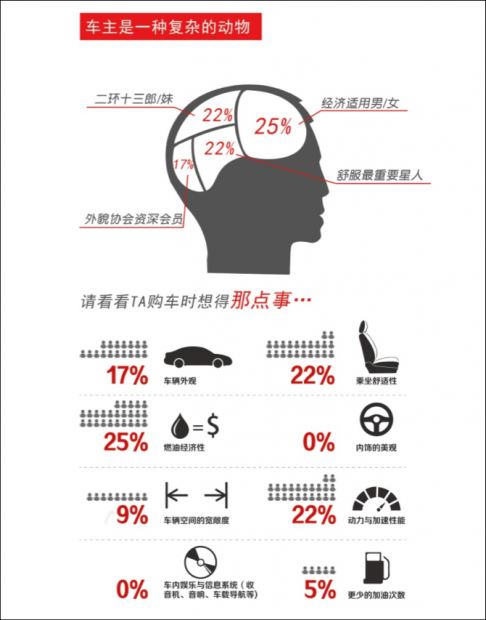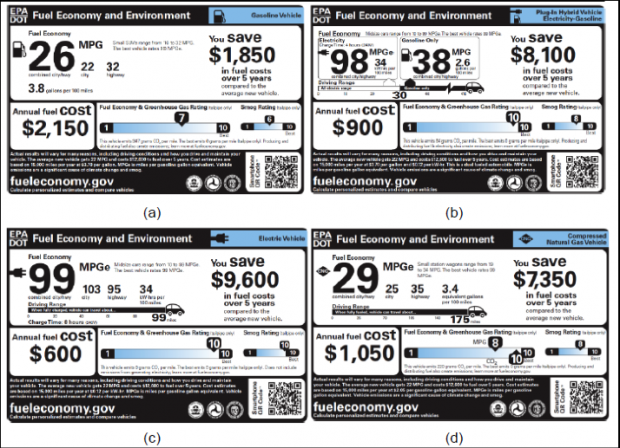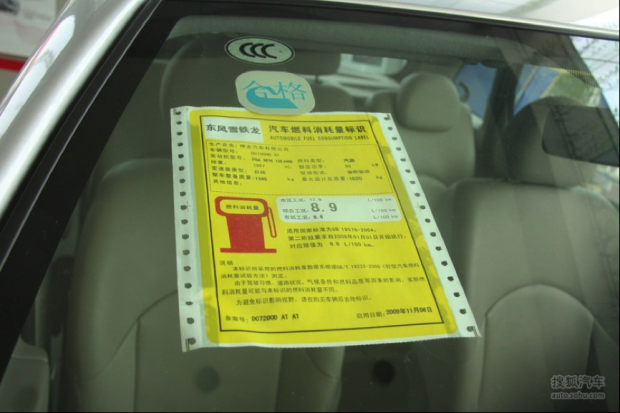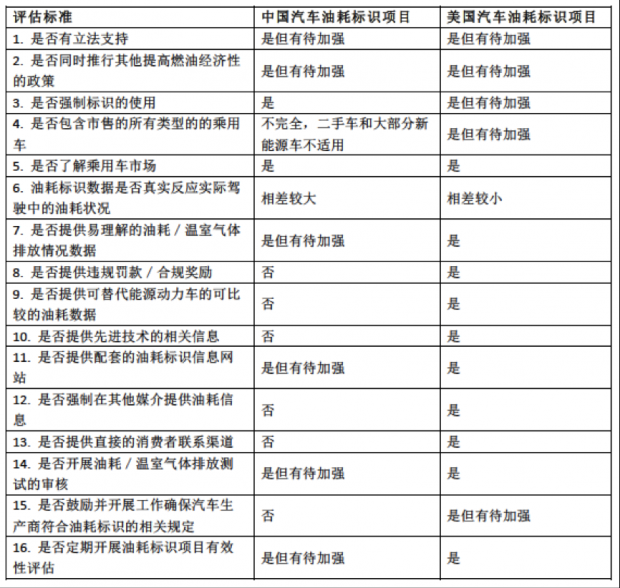The owner is a complex animal
In April 2014, Honeywell, a developer of automotive turbocharging technology, conducted a network survey of some car owners in China [1]. Among the 3,300 car owners surveyed, the top three car owners were “annoyingâ€: high fuel consumption, frequent fueling and no engine power. Among the subjects, 80% of the owners hope that fuel efficiency can be increased by 10%-30% without sacrificing engine performance.

Figure 1. The owner is a complex animal (Honeywell survey)
The “fuel consumption†or “fuel efficiency†mentioned here refers to a fuel economy indicator of a car. To put it simply, it is how many kilometers a liter of oil can run under normal driving conditions, or how many liters of oil it needs to consume every 100 kilometers. The larger the former value and the smaller the latter value, the higher the fuel efficiency of the car, which is the more "fuel-efficient" we usually understand.
What car is the most "fuel efficient"?

"Low" the book bag first. According to Baidu Encyclopedia's definition of "automotive fuel economy", this index is related to the characteristics of the engine, the car's own weight, the speed of the car and various resistances during driving, the efficiency of the drive train and the reduction ratio [2]. Because of the complexity, it is difficult for ordinary consumers to evaluate the car's fuel economy by numbers, but to form some qualitative judgments such as “Japanese car fuel economy†and “SUV fuel oilâ€. However, the real situation of buying a car is that you will end up making choices in several “looks†and their similar choices. Even if you must choose an SUV, the more fuel-efficient one still has its charm.
Because of this, many car dealers are promoting their products under the banner of “fuel savingâ€. How high is the credibility of this “ad nature†information? Honeywell’s survey data shows that the overall fuel consumption satisfaction of the owner is 33% (more than three years). Faced with this "asymmetric" message, the involvement of government agencies may help.
In addition to providing the right information, from the perspective of environmental protection, policy makers are equally concerned about car fuel consumption. Since the fuel consumption is directly related to the emission of CO2 from the main greenhouse gases (the same quality of oil, the higher the fuel consumption per vehicle distance, the more CO2 will be produced by the corresponding combustion), without reducing the driving demand of consumers. Reducing fuel consumption makes car fuel-efficient cars more respected by policy makers. This coincides with the consumer's “fuel-efficient†demand.
To guide consumers to make complex fuel efficiency data easier to consider when buying a car, policymakers around the world have started a simple but efficient job: designing a fuel consumption indicator for the car.
Automotive fuel consumption label worldwide
The fuel consumption indicator is a sticker that shows the fuel economy data of a car. Generally speaking, this sticker is uniformly produced and distributed by the relevant state departments, and is attached to the conspicuous position on the vehicle body before the car leaves the factory. The information on the stickers varies from country to country, some are mainly texts, and some are mainly pictures and numbers.
In 2015, at the invitation of the Asia-Pacific Economic Cooperation (APEC), the International Clean Transportation Commission (ICCT) issued a comprehensive report on the fuel consumption labeling projects of countries (12 APEC member economies and 5 and non-APEC economies). The report summarizes best practices and provides an overall assessment of these projects based on a list of automotive fuel consumption labeling projects that have been or will be implemented in various countries.
The report pointed out that the design goals of the fuel consumption labeling project are:
· Improve consumers' right to know
· Promote the social awareness of clean energy vehicles
· Reduce fossil energy consumption and improve national energy structure
· Improve fuel economy of vehicles
· Reduce CO2 emissions
· Promote an increase in market share of alternative energy vehicles
The US fuel consumption indicator is considered to be significantly superior to other countries in many respects. From Figure 2, we can quickly and clearly understand the car's: (1) fuel consumption data under three driving conditions (urban, highway and other mixed sections) (take the upper left picture as an example, "26, 22, 32" in miles per gallon); (2) estimated total fuel cost for driving the car for one year (for example, in the upper left picture, "$2150"); (3) driving the car compared to the average fuel consumption level of the new car The fuel cost that can be saved in 5 years (for example, in the upper left picture, “$1850â€); and (4) a rough GHG emission rating (in the upper left picture, “7â€, 1-10 total 10 Levels, the higher the level, the lower the greenhouse gas emission rate).
As can be seen from the comparison of the four models in Figure 2, driving an electric car can be very cost-effective. In the alternative energy vehicle at the bottom right of Figure 2, even if the fuel consumption data is not high, the fuel cost advantage is still very obvious (mainly better than natural gas in the United States, the price is much lower than gasoline).

Figure 2 US fuel consumption identification source: ICCT report
Top left: Gasoline car bottom left: Electric car upper right: Plug-in hybrid car right lower: compressed natural gas powered car
Read this, some people will be confused: electric vehicles do not burn oil, where is the "fuel consumption" data? In order to include electric vehicles and other vehicles that use alternative energy as the driving force, the United States has adopted a conversion. The method converts electricity consumption data into "miles per gallon of fuel equivalent." Take the gasoline vehicle on the upper left in Figure 2 and the electric vehicle on the lower left. For example, one gallon of gasoline contains enough energy to drive the car for about 26 miles, and the same amount of energy can drive the car for about 99 miles. Although the accuracy of this value is not high enough (especially for hybrid vehicles, because the power/gasoline usage is very relevant to the driver's driving habits), it provides a very intuitive comparison to the consumer.
The ICCT report mentioned above is also included in the assessment. So, how does China do in comparison?
Our country's automotive fuel consumption labeling project was implemented as early as 2009 and is mandatory. Supervised by the Ministry of Industry and Information Technology, our fuel consumption indicator is long (except Hong Kong, Macao and Taiwan regions):

Figure 3 China's automobile fuel consumption indicator (picture from the network)
Similar to the US fuel consumption indicator, China's “small yellow label†contains the fuel consumption value of the vehicle under three driving conditions (unit: liter / 100 kilometers). When the consumer buys a car, this "small yellow label" will appear in a prominent position on the body (Figure 4).

Figure 4. The "small yellow label" on a Dongfeng Citroen body (picture from the network)
According to the evaluation criteria designed in the ICCT report, China's automotive fuel consumption labeling project is still a certain distance from the international best practice standards.
Table 1. ICCT Automotive Fuel Consumption Labeling Project Evaluation Indicators and China's Corresponding Performance
(compared with the United States)

As mentioned above, the design goal of the vehicle fuel consumption labeling project is mentioned. It is clear that China's automobile fuel consumption labeling project has a limited role in promoting the “social awareness of clean energy vehicles†and “improving the market share of alternative energy vehiclesâ€. . For the project's most direct design goal of “improving consumers' right to know, the performance of the sixth indicator in Table 1 is very important.
Among the ICCT assessment reports, the countries that performed the best on the sixth indicator were the United States and South Korea, and up to nine countries performed poorly on this item (including China). It is worth noting that South Korea and the United States are the only three countries that have conducted fuel consumption data review (14th indicator in Table 1) (the other is Brazil). Although the fuel consumption test data is more or less different from the actual driving situation, good policy design can help reduce such differences.
Conclusion
In September 2015, the Automotive Energy Conservation Sub-committee 2015 Annual Meeting and Standards Review Conference reviewed and finally passed the “Light Commercial Vehicle Fuel Consumption Limit†(GB 20997), “Light Vehicle Energy Consumption Label Part 1: Gasoline and Diesel Vehicles (GB 22757.1) and "Light Vehicle Energy Consumption Marking Part 2: Externally Chargeable Hybrid Electric Vehicles and Pure Electric Vehicles" (GB 22757.2) Mandatory National Standard. In January of this year, the National Standards Committee officially promulgated GB 20997, and will be implemented on January 1, 2018; the other two national standards are still in the comments. Once the three national standards are adopted and implemented, the implementation of the China's automobile fuel consumption labeling project will be greatly enhanced to further promote the development of the new energy vehicle market.
If we take the 16 standards in the ICCT report and measure it, the new China's fuel consumption indicator will be improved on 7 projects, and there will be a huge or even qualitative leap in the four standards. As a “new darlingâ€, new energy vehicles will be more popular among car owners, such as “high subsidiesâ€, “free-handling†and “parking priorityâ€.
Custom Pattern Light,Color Changing LED,Led Projector Light,LED Battery Operated
XINGYONG XMAS OPTICAL (DONGGUAN ) CO., LTD , https://www.xingyongxmas.com